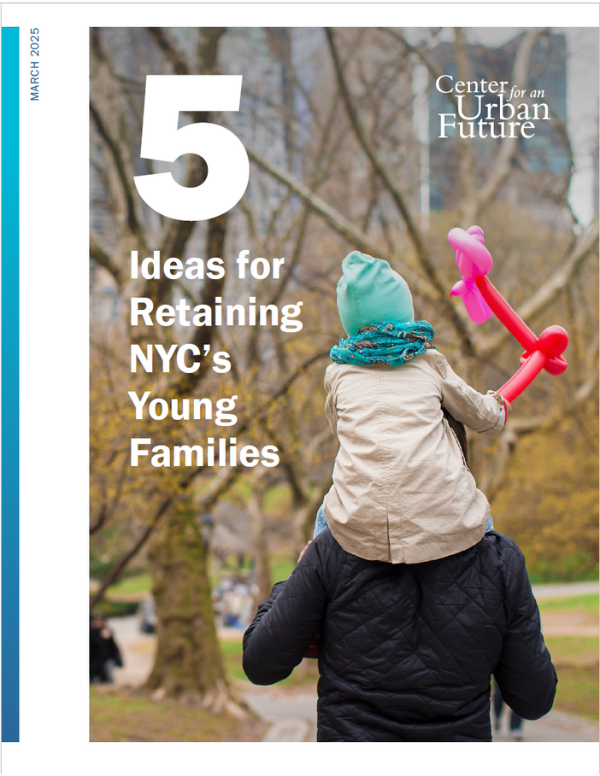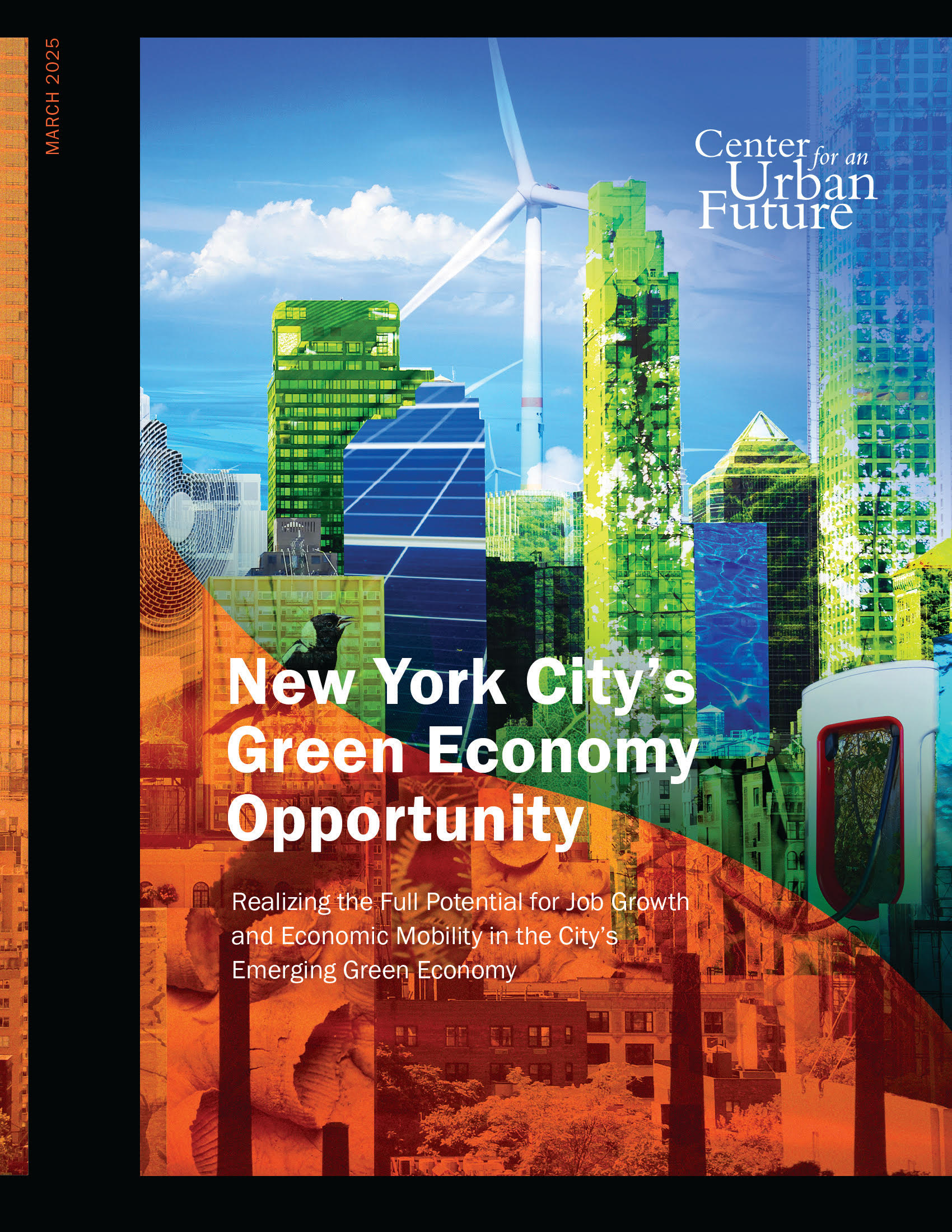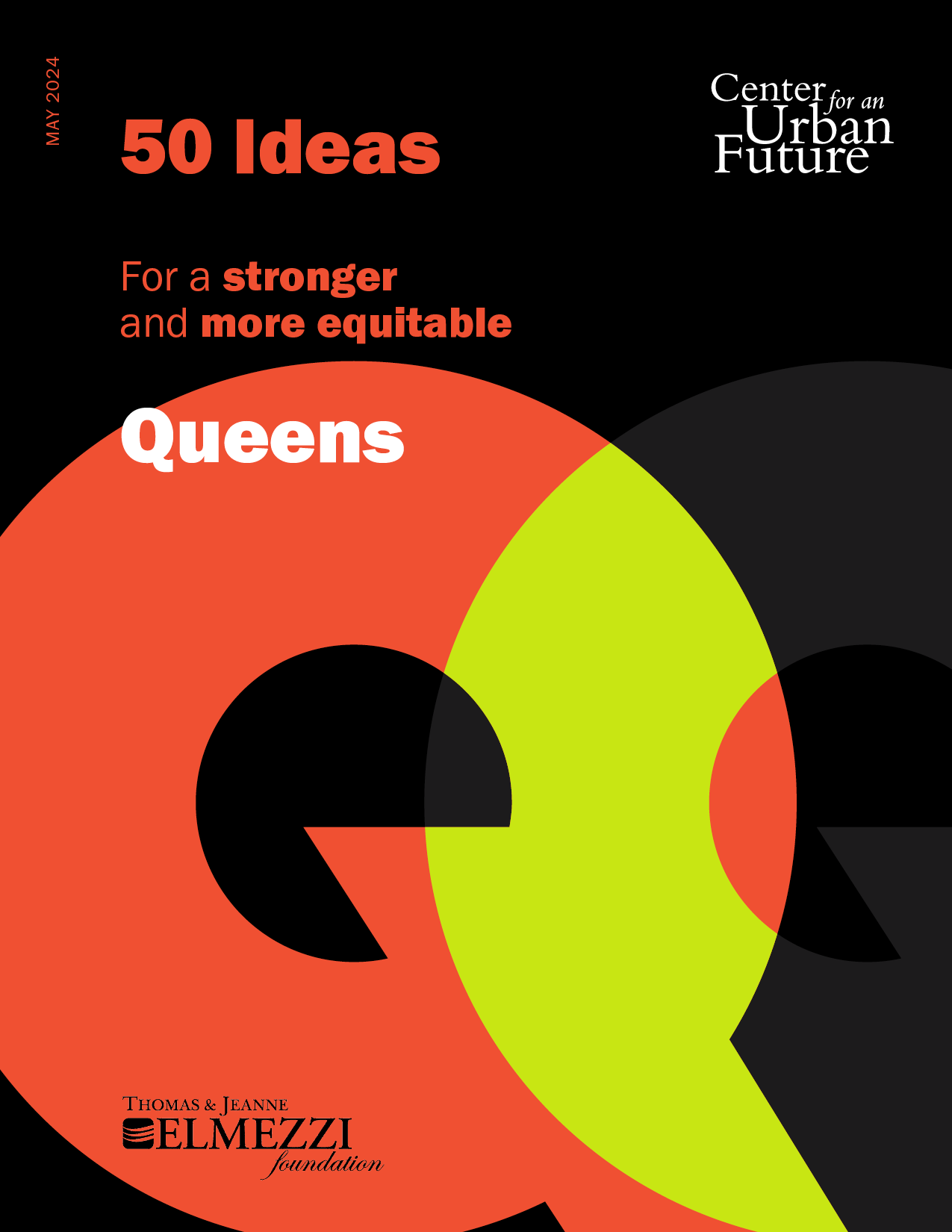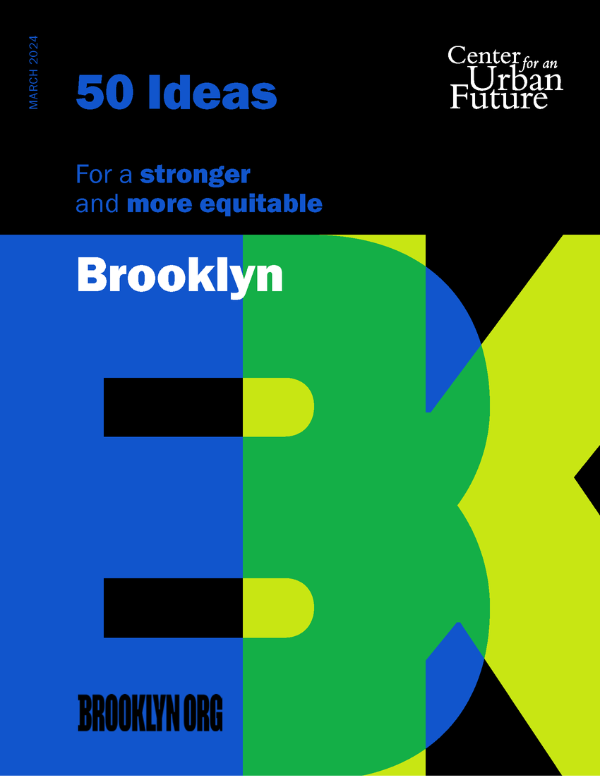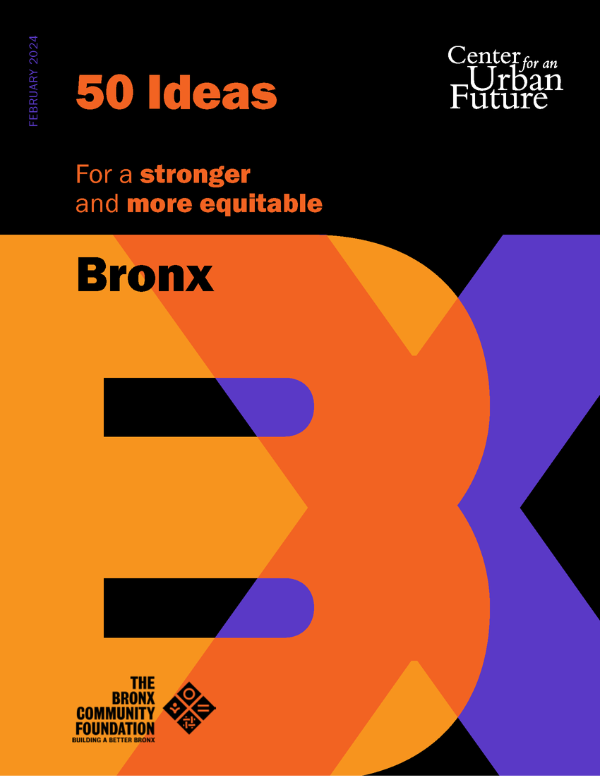New York City has a long history of elevating people from lower-income backgrounds into the ranks of the middle class. But in recent decades, the path out of poverty and into economic security in New York has gotten more difficult, whether due to the decline in manufacturing jobs, the shortage of affordable places to live, the rising cost of childcare, or myriad other factors. City and state officials have tried to revive upward mobility in recent years through initiatives like universal pre-kindergarten and CUNY ASAP, income-boosting measures such as the $16 minimum wage, and workforce development investments like the Adams administration’s moonshot goal of connecting 30,000 New Yorkers to apprenticeships.
But additional steps are undoubtedly needed. Indeed, in 2022, 23 percent of adults and 25 percent of children in New York City lived in poverty. And while federal policy plays a critical role, city and state officials cannot rely on Congress to make the new investments and policy changes that New York so urgently needs to boost economic mobility.
To create new and expanded pathways out of poverty and lift a lot more New Yorkers into the middle class, the Center for an Urban Future (CUF) has laid out five policy ideas that city leaders can implement over the next year.
1. Create a competitive Scale-Up Challenge Fund for nonprofit-run economic mobility programs that are working.
New York City is home to a number of nonprofits that are achieving real results in expanding economic mobility—from workforce training that consistently leads to major income gains to work-based learning programs that help participants land good jobs after college to alternative-to-college fellowships and apprenticeships that enable high school graduates to access well-paying careers. But too many of these nonprofit-run initiatives are succeeding at a very small-scale, serving only a few dozen or a few hundred people a year. Frustratingly, many of the most successful programs end up scaling up outside of New York, simply because it’s easier to do so. Many don’t even apply for city contracts, often because the contracts rely on federal funding that comes with per-participant reimbursements rates that are a fraction of the nonprofit’s actual cost, exclude spending on key supports like stipends, and demand time-consuming and therefore expensive reporting requirements. Scaling up some of these proven nonprofit initiatives would have meaningful impact on the lives and economic trajectories of thousands of New Yorkers.
To address this untapped opportunity, city leaders should establish a Scale Up Challenge Fund—modeled on the Obama administration’s Race to the Top programs for improving education outcomes. Nonprofits would compete to receive grants from the Scale Up Challenge Fund, which would include flexible city dollars kept separate from standard city contracts. An independent judging panel would review applications and provide funds to a small number of programs each year that can demonstrate their effectiveness in boosting career outcomes and expanding economic mobility. Ideally, each award would be for a three-year period, ensuring that the nonprofits are able to plan for growth. Similarly, the city should commit to tracking the impact of the program with rigorous evaluations, perhaps funded in partnership with philanthropic foundations. The city could start by awarding $1 million per year over three years to three programs each in 2025, 2026, and 2027—for a total cost of $27 million. By the end of the period, the Scale Up Challenge Fund would ideally be successful enough to warrant its own scale-up in funding—and attract state or private investment to help further grow its impact.
2. Tap CUNY's students to build a greener university.
Achieving New York City’s ambitious climate goals will require a massive, citywide effort to reduce greenhouse gas emissions from buildings—including city-owned buildings where significantly more progress is needed. City leaders should start with new investments to decarbonize the nearly 300 buildings that make up the City University of New York (CUNY), and put CUNY students to work developing the plans, building upgrades, and retrofits needed to green the nation’s largest urban public university. By doing so, the city will not only accelerate progress toward its climate goals, but also help prepare thousands of mostly low-income, first-generation college students for the green economy jobs that are coming online now and in the years ahead.
While the university has been making progress—even with woefully insufficient capital funding—there’s a lot of work to do to bring CUNY into compliance with the city’s net-zero goals. Most of CUNY’s buildings are over 50 years old and reliant on fossil fuels for heating and cooling. But change is possible: Billions of dollars in new funding for building electrification and renewable energy projects are beginning to flow from the federal and state governments, and this funding could catalyze a much-needed overhaul of CUNY’s built environment.
To take advantage of this moment, Mayor Adams should spearhead a major new initiative to create a greener CUNY, and launch a first-of-its-kind program to harness CUNY’s students to implement these system-wide upgrades. CUNY is already home to many key assets in the fight against climate change that the city can leverage to realize this bold vision. CUNY educates a growing number of students earning degrees and certifications in everything from clean energy HVAC and solar power to architecture and engineering to sustainability in the urban environment. At the same time, CUNY is home to the innovative Building Performance Lab, which has hands-on experience in building decarbonization strategies and materials. City College’s Grove School of Engineering already operates cutting-edge renewable energy and building electrification research centers, and the Sustainable CUNY initiative has seeded hundreds of smart campus sustainability actions.
This new initiative can succeed in putting CUNY students on the path to green economy careers, while transforming the nation’s most powerful economic mobility institution into its greenest one, too.
3. Replicate Cincinnati’s Minority Business Accelerator in NYC.
There are roughly 20,000 Black- and Latino-owned businesses across the five boroughs, but far too few of them ever grow from small businesses into medium-sized or large businesses. Indeed, the city’s average minority-owned employer business generates less than half the revenue—45 percent—of the average white-owned employer business. Changing this—by helping more Black- and Latino-owned businesses break into a whole different echelon of revenue and growth—would help build wealth in communities of color, produce more good jobs for New Yorkers of color, and create a new class of investors in the next generation of Black and Latino entrepreneurs.
City leaders can accelerate the efforts of minority entrepreneurs by replicating an innovative program in Cincinnati, the Minority Business Accelerator (CMBA). Since 2003, the CMBA has worked to help several dozen minority-owned small businesses scale up by providing them with strong individualized business strategy and support, access to capital to finance expansion, and, perhaps most importantly, commitments from major companies in the region to direct significantly more procurement dollars their way. The program isn’t focused on helping every small business develop a growth strategy; instead, it identifies established minority-owned businesses that are poised for growth, but which might not realize that promise without strategic interventions.
New York is already home to many exceptional small business assistance organizations that would be core partners in replicating the Minority Business Accelerator model. But much of the city’s existing small business assistance ecosystem is focused on start-up and survival; by comparison, the opportunity to help supercharge more of the city’s growth-oriented minority-owned businesses remains largely untapped. Replicating Cincinnati’s Minority Business Accelerator would not only create stronger and larger businesses; it would be an important step toward closing the glaring racial wealth gap in New York.
4. Help thousands more New Yorkers earn bachelor’s degrees by expanding the highly successful CUNY ACE program.
Despite important advances in apprenticeships, skills-based hiring, and career-connected workforce training programs, a bachelor’s degree remains arguably the most powerful springboard into the well-paying jobs growing in New York City. But while anywhere from 75 to 90 percent of the workers in most of the city’s best-paying industries hold at least a four-year degree, just 24.2 percent of Hispanic New Yorkers and 30.8 percent of Black New Yorkers have one. To build a more equitable economy, city leaders will have to invest in proven programs that can help close this bachelor’s degree attainment gap and generate lasting economic mobility.
Fortunately, CUNY is home to a program that does exactly that: CUNY ACE. Like the nationally renowned CUNY ASAP program for community college students, the Accelerate, Complete, and Engage (ACE) program provides students attending CUNY’s senior colleges with a mix of supportive services and financial help that is boosting bachelor’s degree attainment rates by as much as 40 percent. The problem is that unlike CUNY ASAP, which city leaders have scaled to serve about 25,000 community college students each year, CUNY ACE serves just 3 percent of eligible students annually.
To help thousands more New Yorkers earn bachelor’s degrees, the city should commit to scaling CUNY ACE over the next five years to reach about 30 percent of all full-time senior college students. New York State, which provides the lion’s share of funding for CUNY’s four-year colleges, should partner with the city on this effort. Even a modest increase in funding—for instance, an additional $10 million from both the city and state—could triple ACE’s reach and help more than 1,100 additional students earn bachelor’s degrees over the next five years. If both the city and state were to invest an additional $54 million in CUNY ACE annually, the program could grow to serve nearly one-third of all senior college students, help almost 5,000 more students achieve bachelor’s degrees over five years, and generate an additional $5.17 billion in lifetime earnings.
5. Launch a talent pipeline initiative for creative economy careers.
Over the past decade, the extensive focus on the need to diversify the city's tech workforce has sparked a range of city-supported and privately funded programs aimed at expanding pathways into technology-powered careers. But tech isn’t the only part of New York’s economy that could benefit from new city-led efforts to develop pipelines into middle- and high-wage jobs that have been growing in recent years. Just as city leaders established the Tech Talent Pipeline a decade ago to expand access to tech careers, it should do the same now for the city’s vibrant creative economy.
The creative economy—including advertising, film and tv, fashion, architecture and design, and independent artists—employs more than 300,000 New Yorkers, has grown significantly over the past two decades, and pays well above the citywide median wage. But, like the tech sector, the creative industries have a long way to go before they look like New York City. A recent report by the Center for an Urban Future found that Black workers hold fewer than 8 percent of the city’s advertising jobs, while comprising nearly 21 percent of the city’s total workforce. Likewise, Black New Yorkers hold just 8 percent of the jobs in publishing, 8 percent in architecture, and 9 percent in film and tv. To change this, the city should launch a Creative Economy Talent Pipeline initiative within the Mayor’s Office of Talent and Workforce Development, aimed at boosting career pathways for underrepresented New Yorkers into the city’s creative sector.
The city can draw lessons from the successes of its Tech Talent Pipeline, CUNY 2X Tech, and Computer Science for All initiatives, which are building skills and confidence in computing and technology from kindergarten through college and leading to measurable improvements in career outcomes. This effort should incubate new program models in partnership with creative economy employers, CUNY, and workforce development organizations; support and strengthen small but encouraging programs operating through the Mayor’s Office of Media and Entertainment; and build on innovative partnerships developed by a small number of the city’s Career and Technical Education high schools.
_300_388_bor1_a4a4a4.png)



